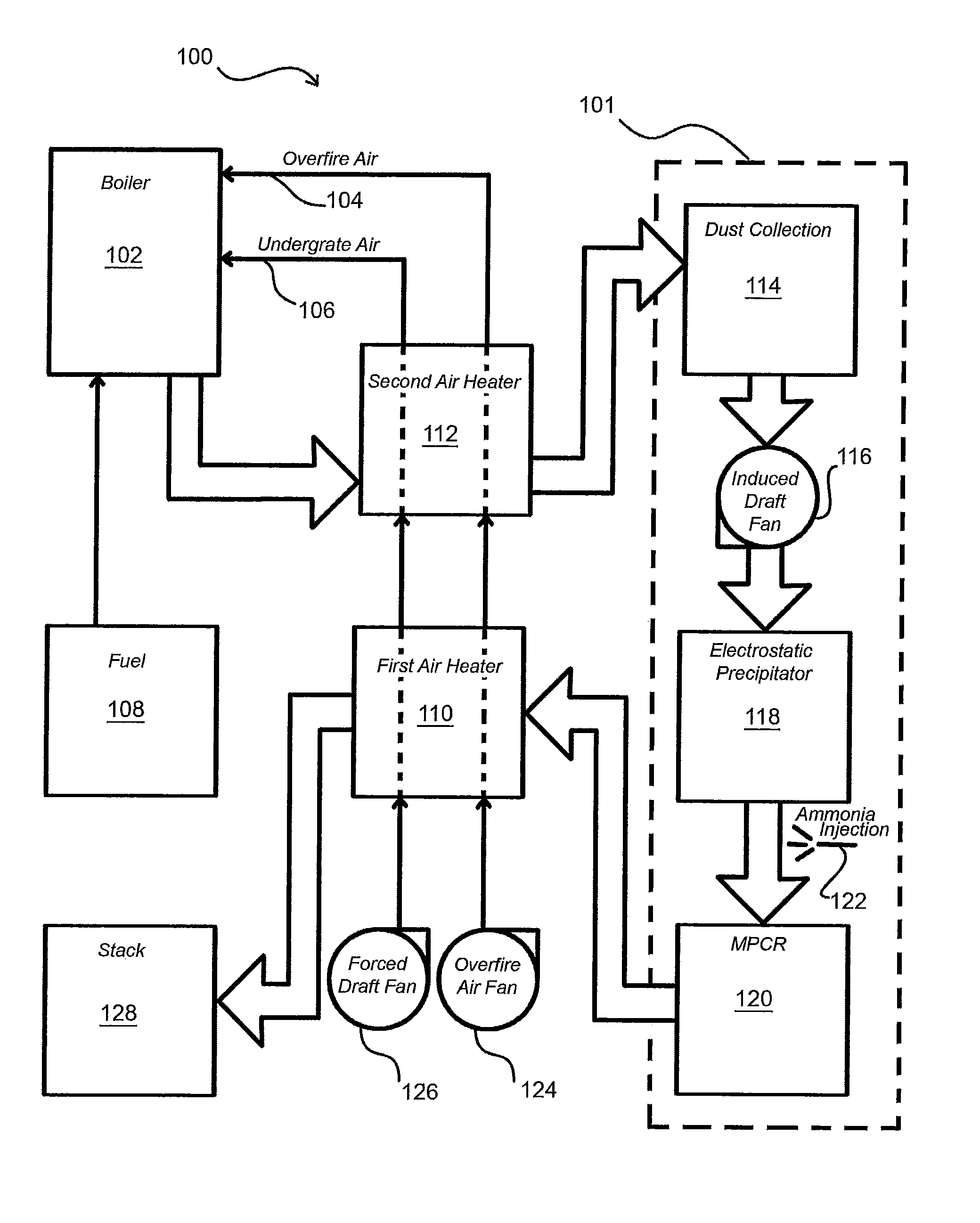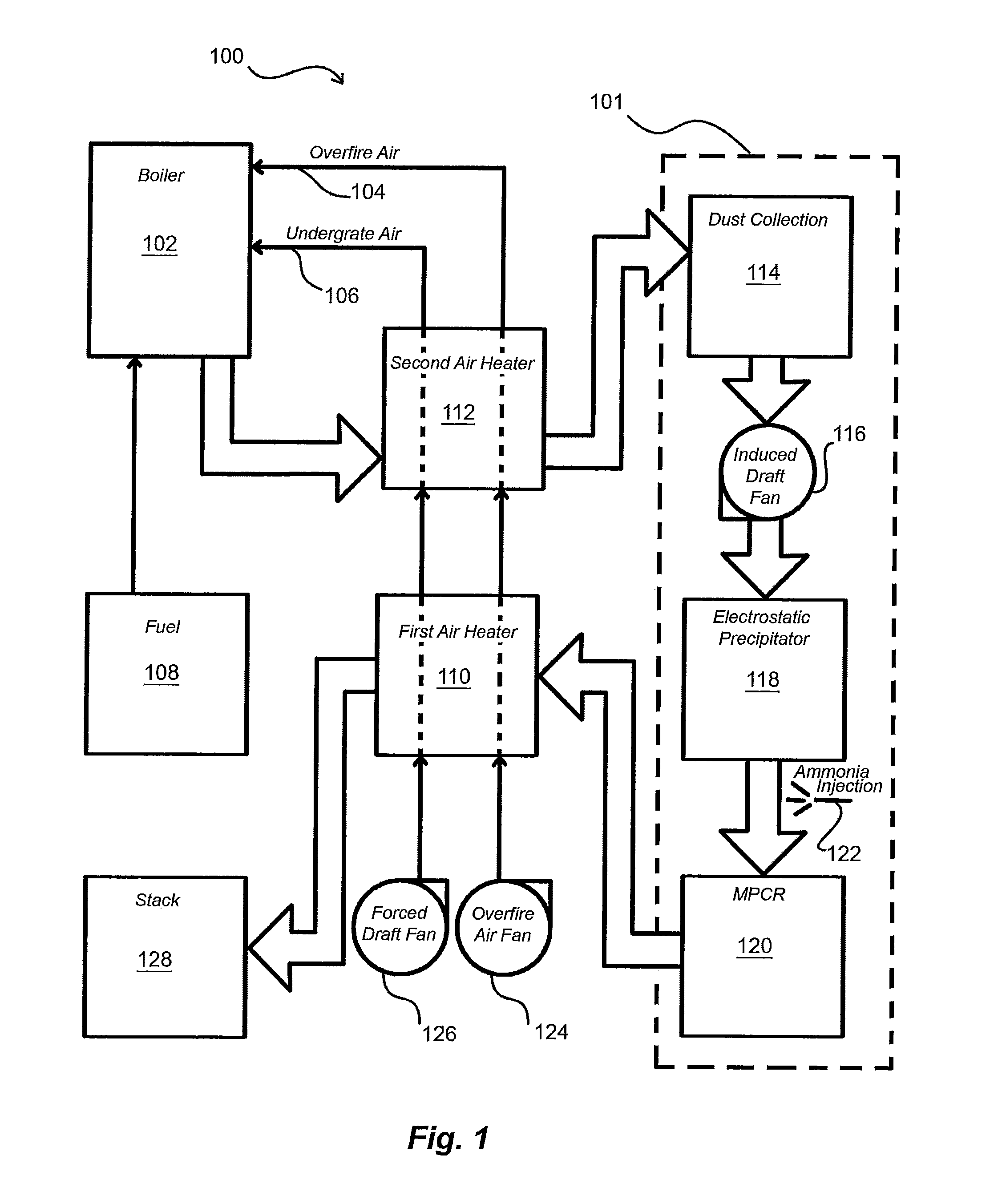Integrated boiler and air pollution control systems
a boiler and integrated technology, applied in the field of air pollution control, can solve the problems of significant problems in industrial settings involving both hot side and cold side scr installations, poor proven results of such techniques, and inability to use hot side scr processes in conjunction with wood-fired burners
- Summary
- Abstract
- Description
- Claims
- Application Information
AI Technical Summary
Benefits of technology
Problems solved by technology
Method used
Image
Examples
Embodiment Construction
[0032]Reference will now be made to the drawings wherein like reference numerals identify similar structural features or aspects of the subject invention. For purposes of explanation and illustration, and not limitation, a partial view of an exemplary embodiment of the air pollution control system in accordance with the invention is shown in FIG. 1 and is designated generally by reference character 100. Other embodiments of air pollution control systems in accordance with the invention, or aspects thereof, are provided in FIG. 2, as will be described. The systems and methods of the invention can be used to reduce air pollution and increase thermal efficiency for power and / or heat plants fueled by biomass fuels and / or other fuels, for example.
[0033]Referring now to FIG. 1, system 100 includes a boiler 102, which can be a stoker such as a Riley Advanced Stoker™, available from Riley Power Inc. of Worcester, Mass., for example. The boiler could instead be a fluidized bed boiler, a bubb...
PUM
| Property | Measurement | Unit |
|---|---|---|
| temperature | aaaaa | aaaaa |
| temperature | aaaaa | aaaaa |
| temperature | aaaaa | aaaaa |
Abstract
Description
Claims
Application Information
 Login to View More
Login to View More - R&D
- Intellectual Property
- Life Sciences
- Materials
- Tech Scout
- Unparalleled Data Quality
- Higher Quality Content
- 60% Fewer Hallucinations
Browse by: Latest US Patents, China's latest patents, Technical Efficacy Thesaurus, Application Domain, Technology Topic, Popular Technical Reports.
© 2025 PatSnap. All rights reserved.Legal|Privacy policy|Modern Slavery Act Transparency Statement|Sitemap|About US| Contact US: help@patsnap.com



